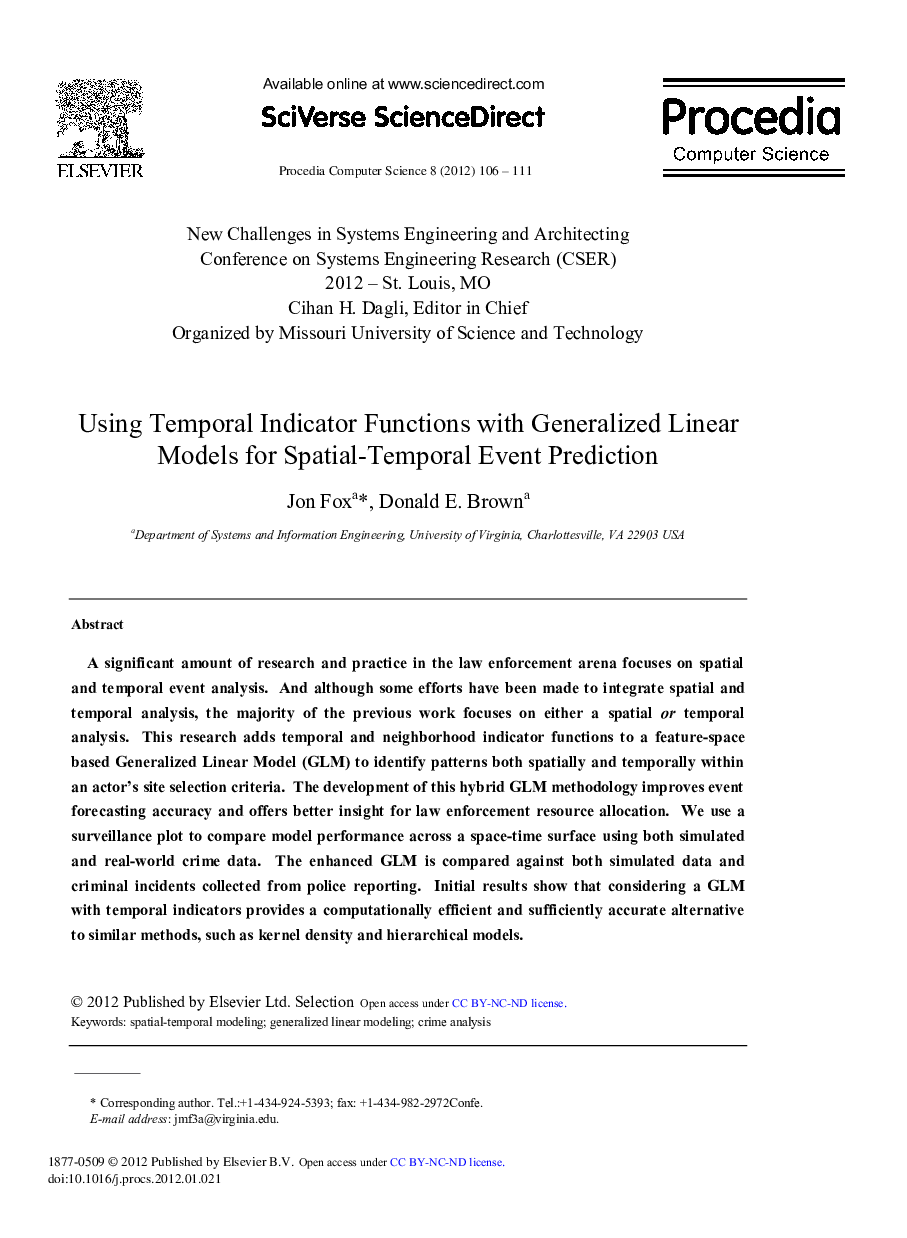| Article ID | Journal | Published Year | Pages | File Type |
|---|---|---|---|---|
| 488067 | Procedia Computer Science | 2012 | 6 Pages |
A significant amount of research and practice in the law enforcement arena focuses on spatial and temporal event analysis. And although some efforts have been made to integrate spatial and temporal analysis, the majority of the previous work focuses on either a spatial or temporal analysis. This research adds temporal and neighborhood indicator functions to a feature-space based Generalized Linear Model (GLM) to identify patterns both spatially and temporally within an actor's site selection criteria. The development of this hybrid GLM methodology improves event forecasting accuracy and offers better insight for law enforcement resource allocation. We use a surveillance plot to compare model performance across a space-time surface using both simulated and real-world crime data. The enhanced GLM is compared against both simulated data and criminal incidents collected from police reporting. Initial results show that considering a GLM with temporal indicators provides a computationally efficient and sufficiently accurate alternative to similar methods, such as kernel density and hierarchical models.
